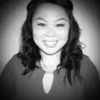Researchers, who used MRI on infants who have older siblings with autism, were able to correctly predict about 80 percent of those infants who would later develop autism.
Nature published the study that included hundreds of children participants worldwide. Until now, it has been hard for researchers to diagnose autism in infants because as Joseph Piven, psychiatrist at the University of North Carolina (UNC) in Chapel Hill and co-author of the study notes, “children who end up with autism at 2 or 3 years of age don’t look like they have autism in the first year.”
The team of researchers scanned the brains of 106 high-risk infants at age 6, 12 and 24 months using MRI to examine if there was any brain overgrowth. In addition, researchers followed brain activity of low-risk infants.
Data showed that 15 of the high-risk infants were diagnosed with autism at 24 months. The brains of these infants grew faster between 12 and 24 months compared to children who were not diagnosed with ASD. This speeded growth also occurred during the same time individuals started showing behavioral signs of autism.
The team also used a deep-learning neural network, to see if MRI scans at six and 12 months in high-risk infants would be able to diagnose autism at age 2. This algorithm predicted 30 out of 37 autism diagnoses, while it also produced false-positives in four out of the 142 infants who were not later diagnosed.
“The algorithm described in this paper will require replication before it could be considered a possible clinical tool for predicting ASD in high familial risk infants, as false diagnostic predictions have the potential to adversely affect individuals and families,” wrote the authors. “In addition, we do not know whether the brain differences we observed are specific to so-called idiopathic autism or share characteristics with other neurodevelopmental disorders.”
